Travel and hospitality brands spend a fortune on finessing the user experience of their services but neglect the experience on their platforms. This is where hyper-personalization should step in.
Today, about 328.77 million terabytes of data are created every day, and 120 zettabytes of data will be generated this year—this sheer volume of data powers businesses, industries, and even whole economies.
🎨 Painting a picture.
The travel & hospitality industry, which includes hotels, online travel aggregators (OTA), and airlines, acquires data from disparate online as well as offline sources like websites, social media, display ads, point-of-sale (POS) systems, call centers, interactive voice response (IVR), third-party sites, spreadsheets, databases, and many more.
This fragmented data is aggregated and centralized by Customer Data Platforms (CDPs) and then used for data activation in the form of personalized user engagement by brands.
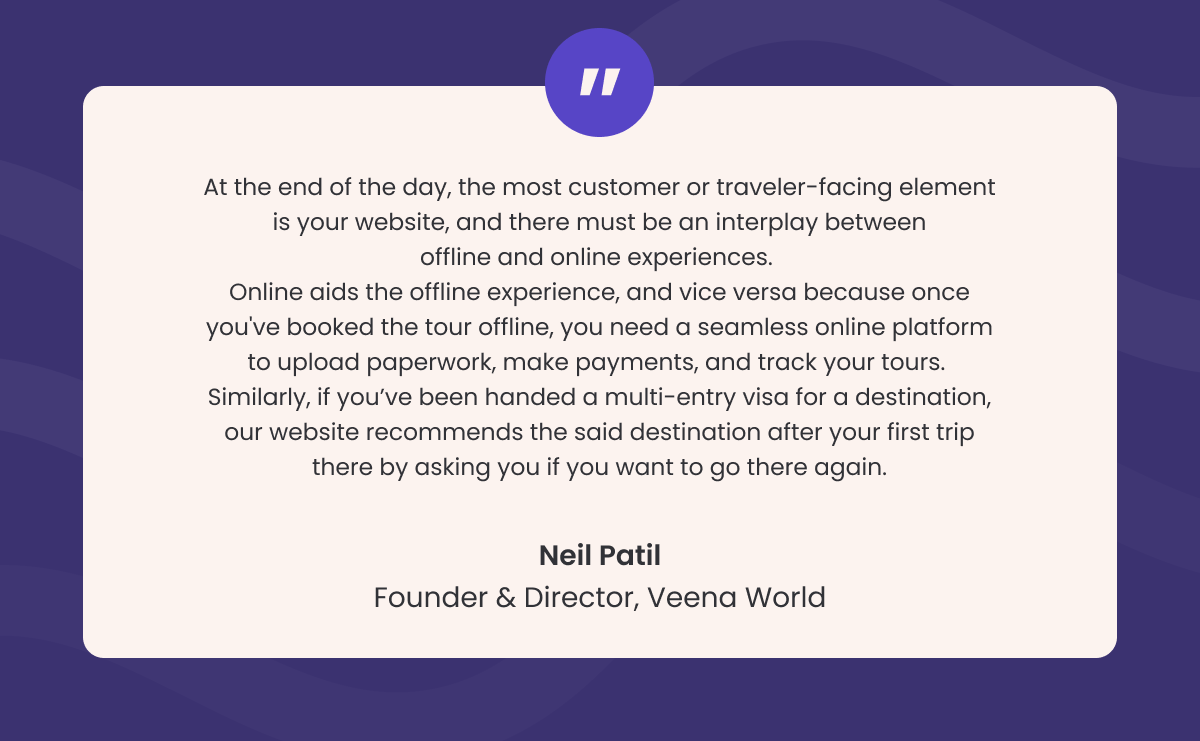
Achieving this interplay isn’t impossible. Connecting the dots and watching your favorite campaigns spring to life is a riveting sight for would-be marketers.
🗃️ Data collection
For OTAs, airlines, and hotels, much of the data enters the marketing funnel via first-party &, third-party websites, POS systems, call centers, IVR, and spreadsheets- The initial points of contact with the user.
What happens?
Brands struggle to ‘correctly’ collect data from various sources. This problem stems from poor system integrations and inconsistent data formats.
Picture this scenario of a hotel booking platform – the user’s Name and email are collected from the website, their phone number is collected from the IVR, whereas Booking ID is uploaded in an offline spreadsheet.
More often than not, the integrations with the source systems (website, IVR &spreadsheets) lack interoperability and enter the destination system in an unreadable format.
What should happen?
In collecting data, a CDP ingests data from a plethora of sources in unreadable formats, giving rise to a need to standardize the data formats to make them readable and usable.
This is typically taken care of by the CDP, but in rare cases, the responsibility is assumed by the gatekeeper of the data source that is being integrated with the CDP. The gatekeeper deploys Extract Transform Load (ETL), a process defined by a set of business rules to move data from numerous sources to a single repository called a Data Warehouse.
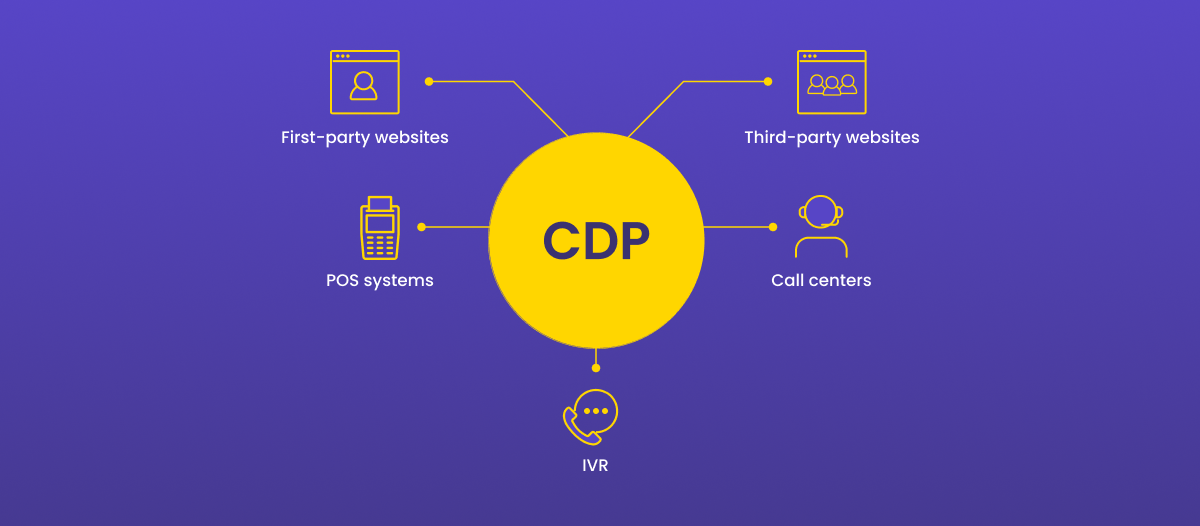
🪪 Data unification.
This omnichannel data collected from fragmented sources is the first of a brand’s many marketing challenges – to successfully collect uber-valuable user-specific data from numerous sources without data leakage.
What happens?
Hotels & OTAs, whose businesses often overlap, acquire the same data with varying levels of user details from diverse sources and end up in the system as duplicates or, worse – as replacements.
Imagine a hotel’s POS system receives the name and email of a user. The same hotel that is listed on an OTA’s website accepts the name and phone number of the same user.
What should happen?
The hotel’s database has two sets of information from the same user from two different sources. Instead of saving them as duplicates or replacements, a CDP rightly unifies the two sets of data and creates a singular user profile in a glanceable fashion.
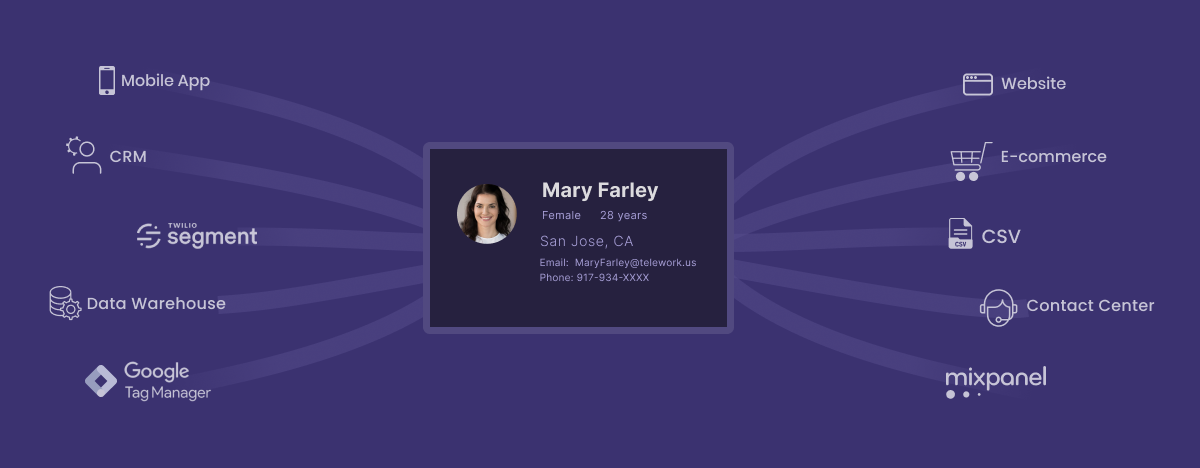
Doing so prevents leakage and synchronizes all user-specific data that is being beamed all over the place.
📣 Data activation.
You’ve managed to collect and unify user data, and it’s time to use it for your marketing campaigns. A lightweight CDP like WebEngage has built-in capabilities to not only execute automated campaigns, but even hyper-personalize engagements on the strength of a strong segmentation engine.
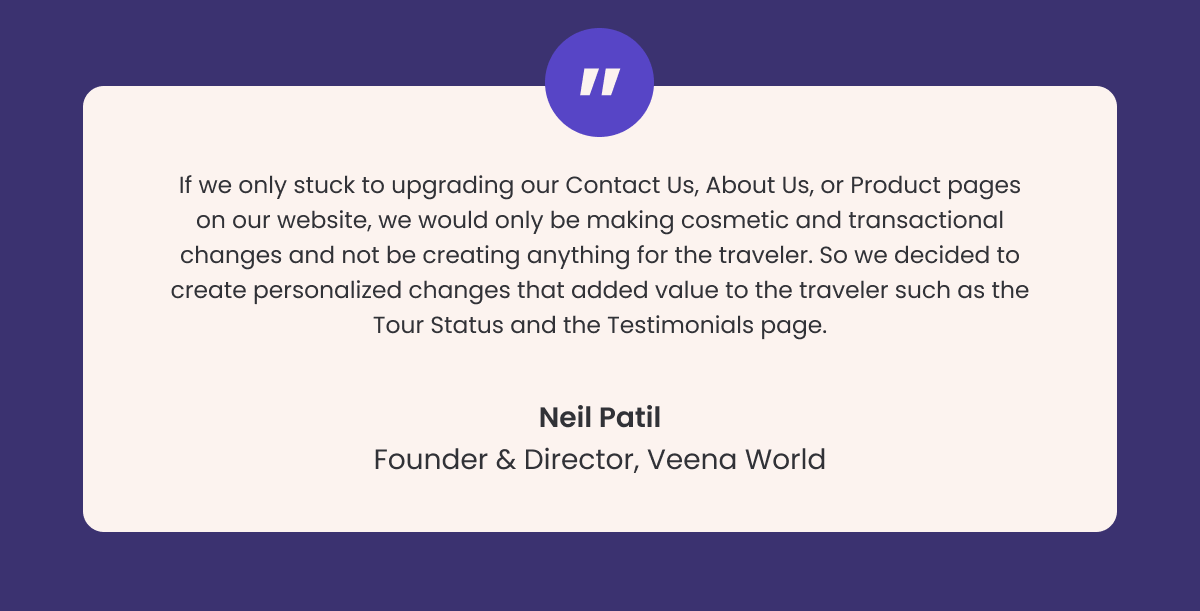
Hyper-personalized campaigns tend to perform extremely well compared to non-personalized ones. More relevance equals more personalization. Here are some ways to craft an individualized experience for your users.
1. Journey Designer
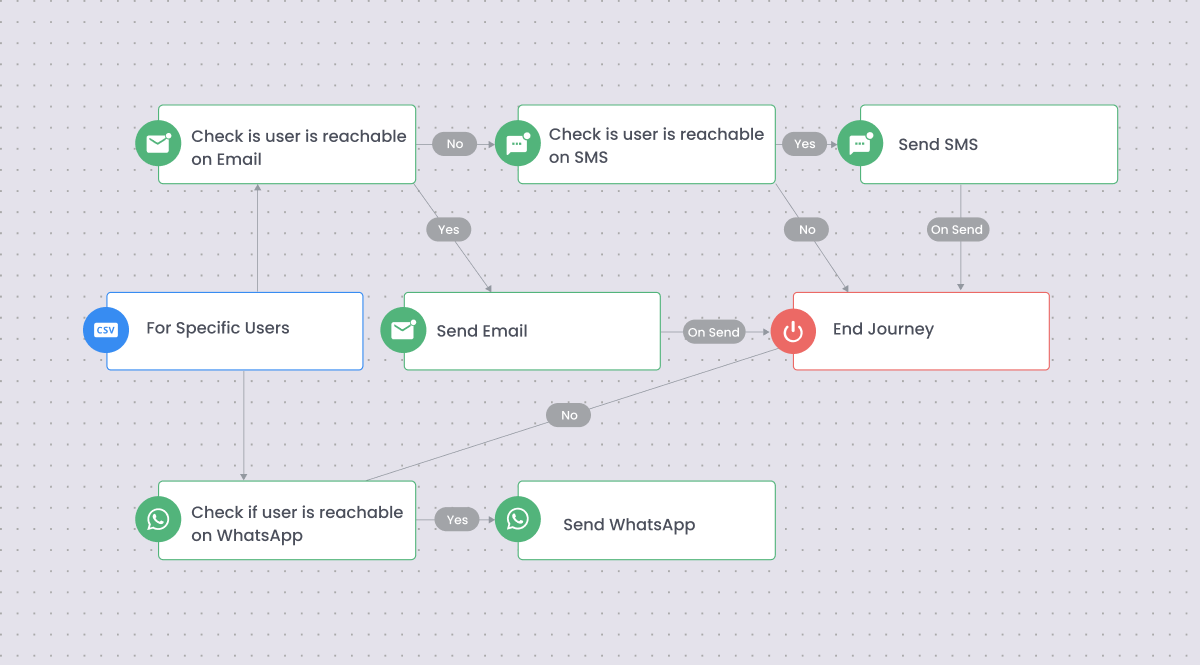
The journey designer is a drag-and-drop storyboarding interface to program user journeys as well as campaigns across multiple channels and touchpoints.
Journey Designer is the building block used to engage users across channels and hyper-personalize campaigns.
2. Best Channel & Send-Time Optimization:
WebEngage lets you identify the right channel and the right time to engage your audience.
Wego, the award-winning meta-search engine and one of the largest online travel marketplaces, used this feature to understand the best time period to reach out to users and select their events and triggers accordingly. In doing so, they amassed nearly 27K daily unique conversions through push notifications. To learn how they did it, read the Impact Story™.
If you’re eager to understand how Best-Channel & Send-Time Optimization work, read this blog.
3. Web Personalization
Web Personalization lets you personalize on-site notifications, aka web pop-ups and in-line elements of a website.
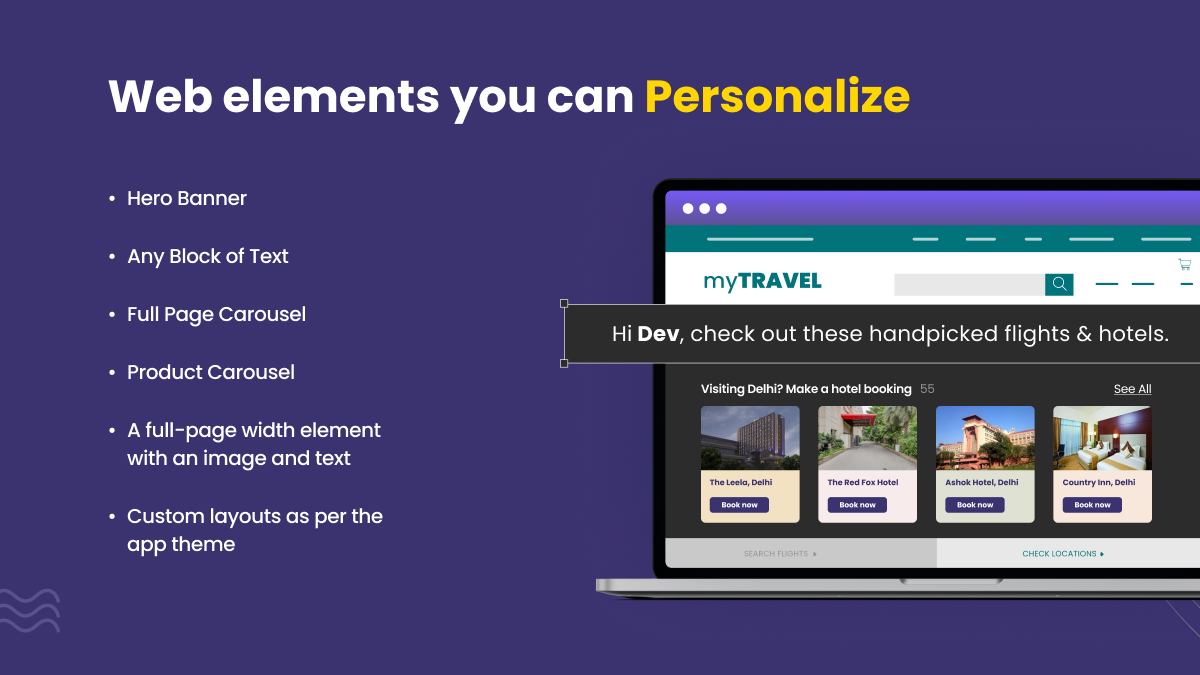
Some use cases of web personalization are:
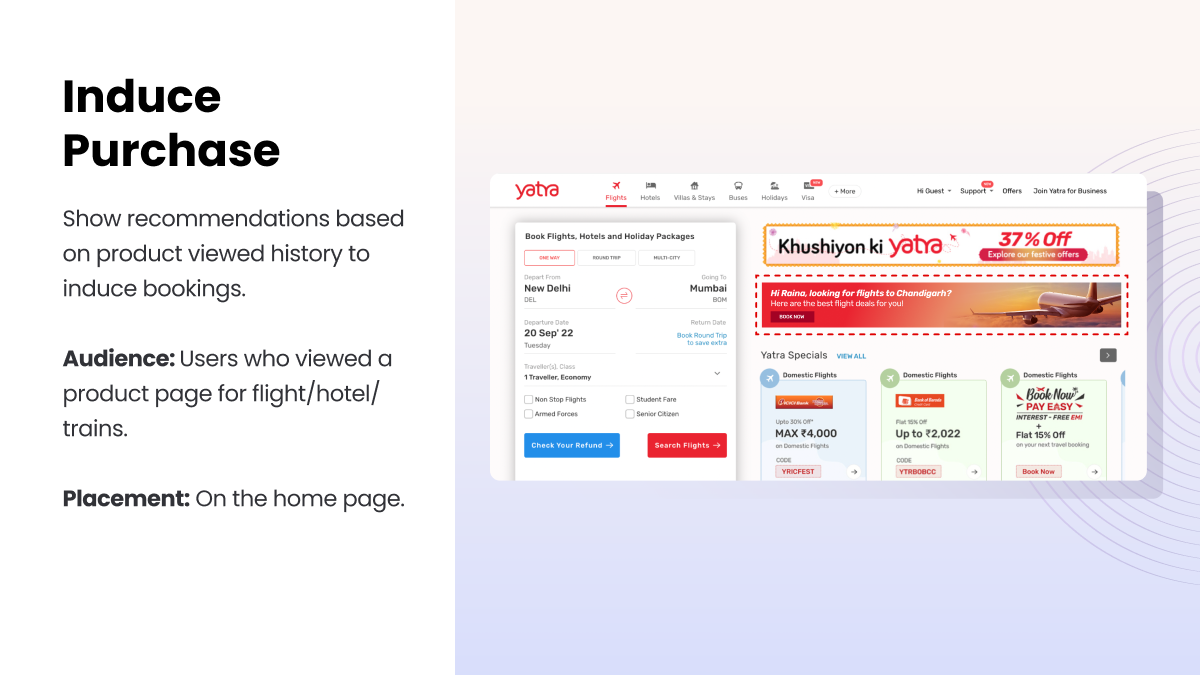
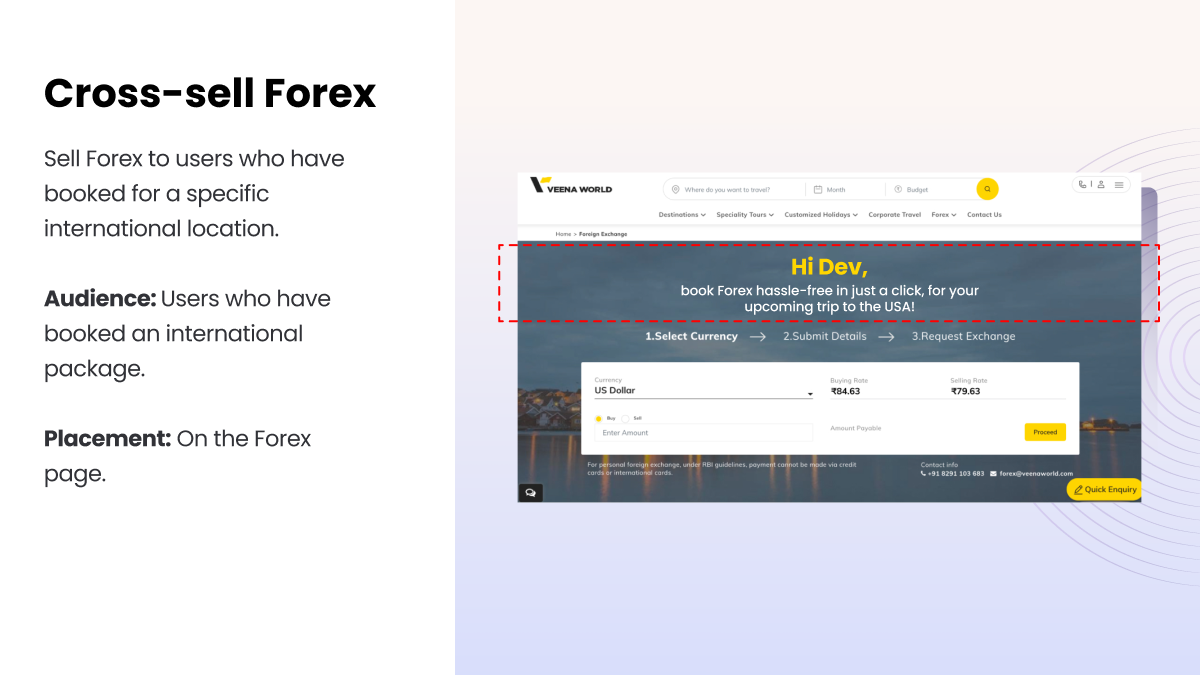
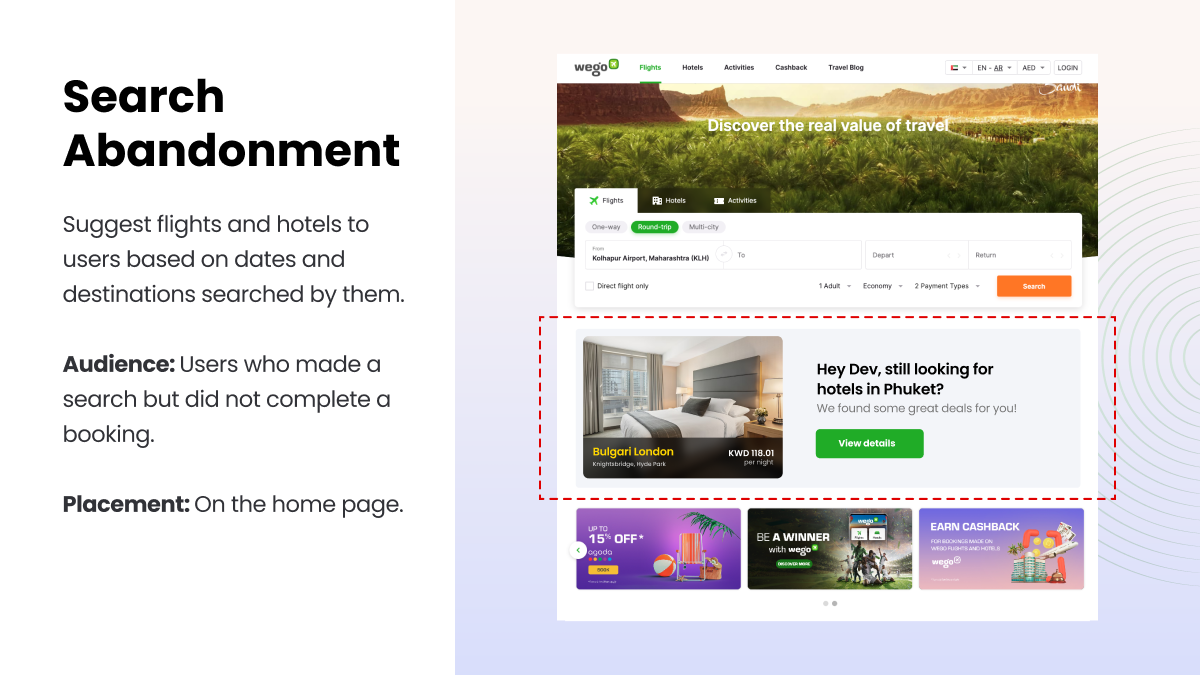
4. App Personalization
App Personalization lets you personalize in-app notifications or in-line elements of an app.
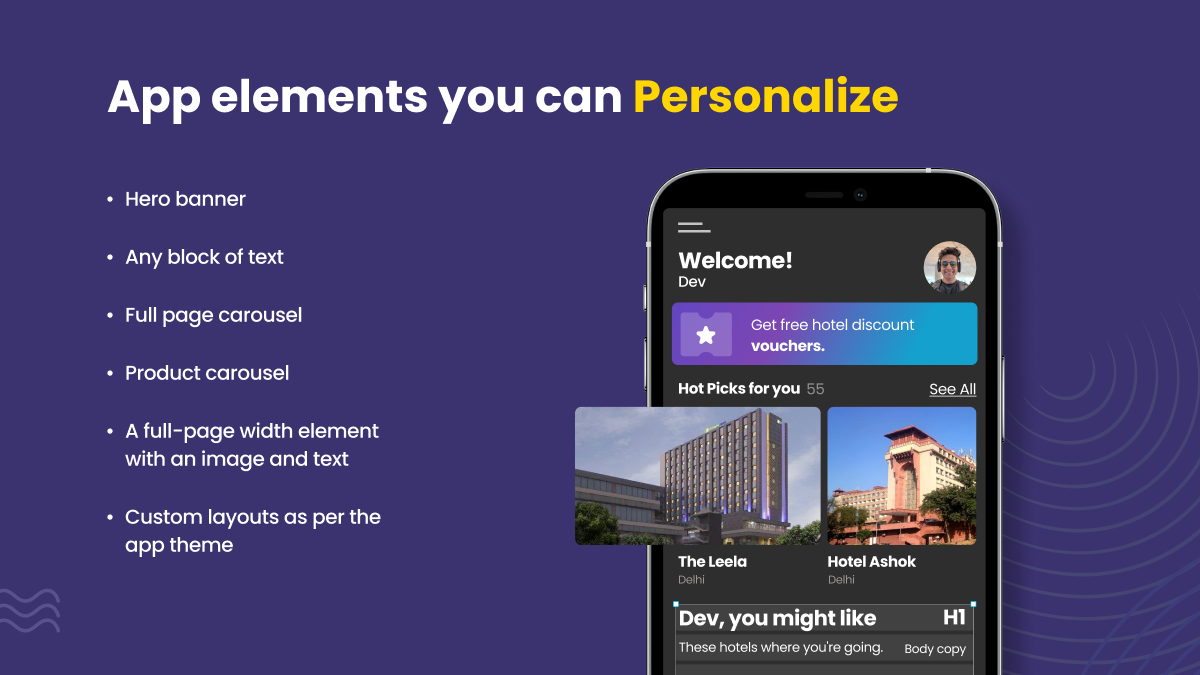
Some use cases of app personalization are:
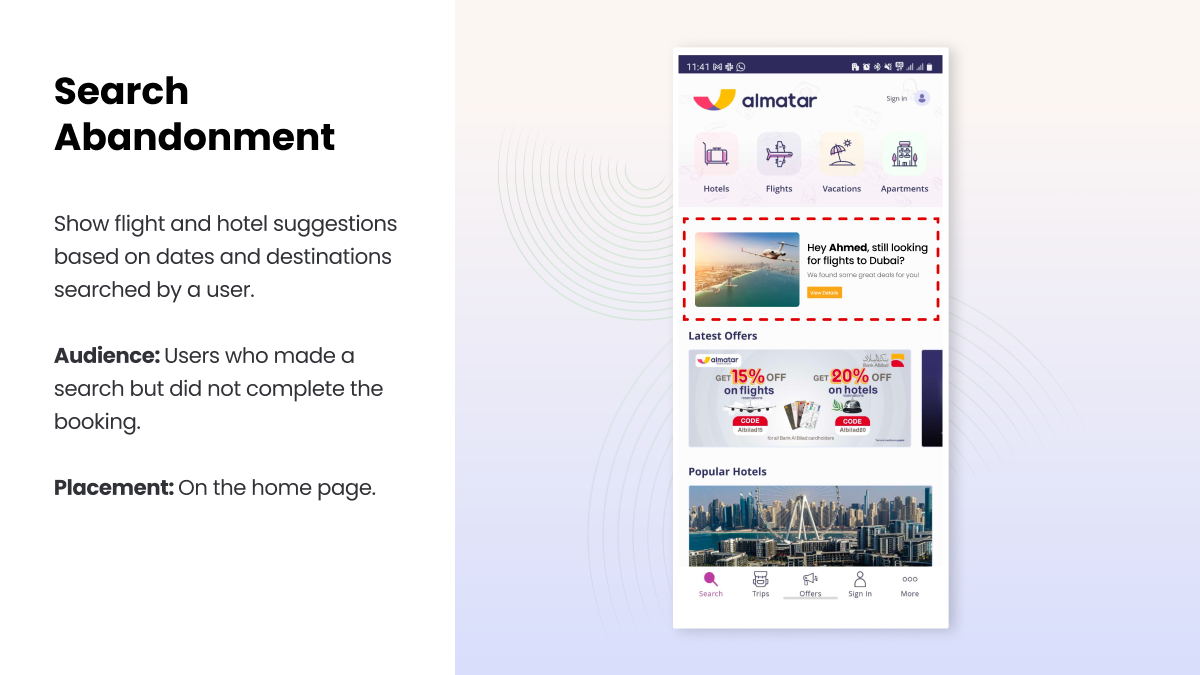
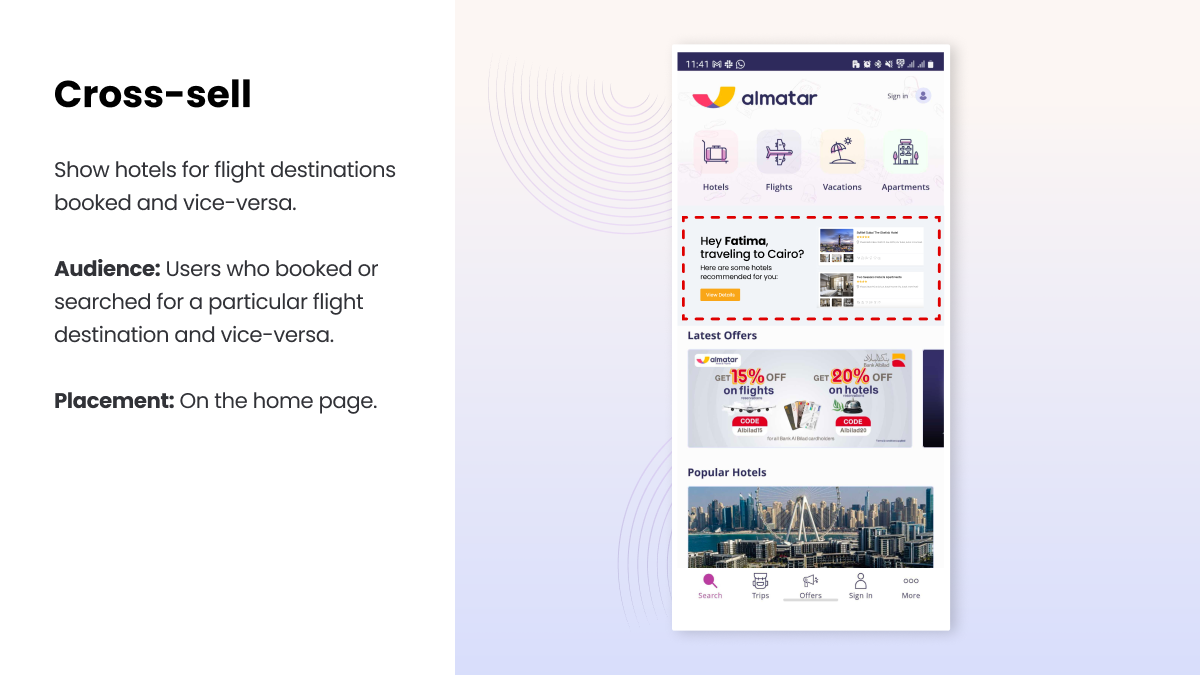
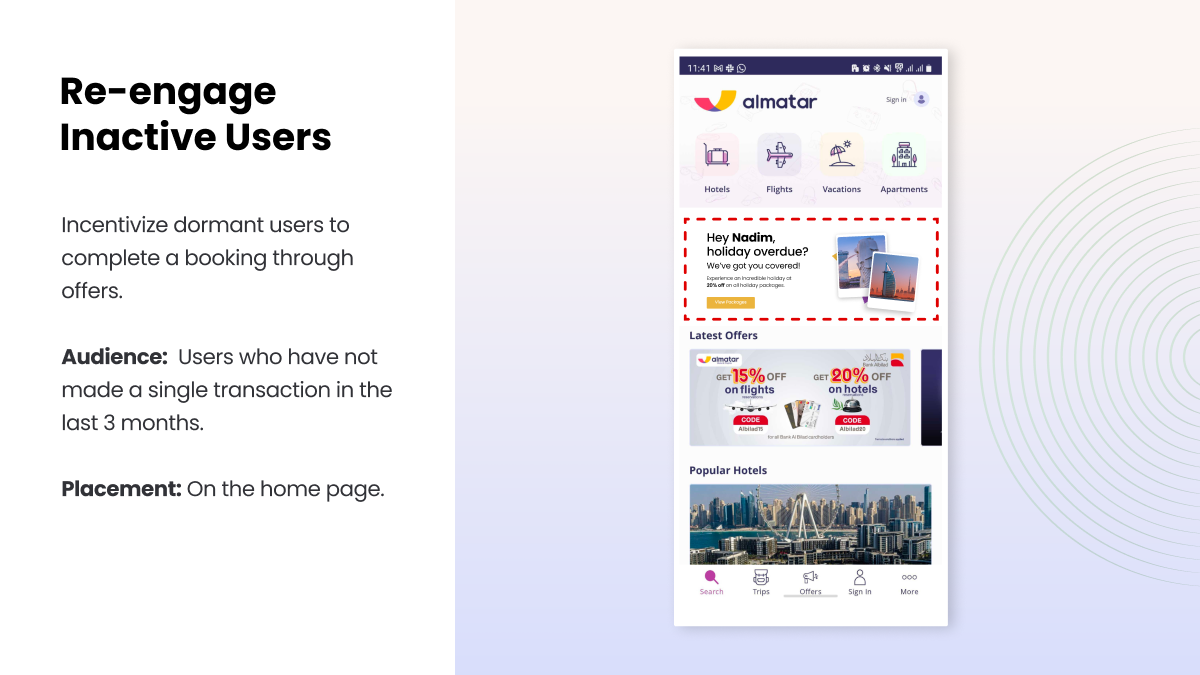
5. Catalog & Recommendation Engine
WebEngage’s Catalog & Recommendation Engine lets users keep all their product info, like flight & room prices, in one place and leverage that info to send hyper-personalized communications based on user activity.
Thrillark, a managed marketplace that curates travel experiences, leveraged Recommendation and Catalog to formulate a plan to make recommendations more dynamic and personalized to each user. They personalized all their transaction emails and recommended various experiences to their end users based on their search history.
Using hyper-personalized messages, Thrillark achieved a 60% increase in user engagement. If this piques your interest, you can read all about it in this unputdownable Impact Story™.
6. Our Personalization Features
WebEngage’s personalization stack combines its catalog & recommendation engine, CDP, and marketing automation capabilities to:
- Create 1:1 user engagement across 12+ channels like WhatsApp, Email, SMS, push notifications, in-app notifications, and many more.
- Retarget one-time visitors and users on the verge of churning via targeted marketing on Facebook and Google.
- Segment users with advanced frameworks like Recency, Frequency, Monetary (RFM) analysis, and Predictive Segmentation that famously calculates the likelihood of a user performing a desired action.
This well-equipped personalization stack can be milked to fashion bespoke communications for diverse use cases. Several customers from travel & hospitality benefited from these capabilities. Read how they did it.
🎤 Closing thoughts.
Competitive innovation and disruption don’t have to come at a cost, but tools are often programmed to be operable, not interoperable. They are designed to work well with the customer but not with each other. More time is spent on understanding tools than on using them, and brands often shell a fortune on building a marketing stack by buying half-baked expensive tools that work in silos.
WebEngage offers a bundled solution to quell your qualms about consumers, campaigns, clicks, and conversions. We believe in doing the heavy lifting for you so you can focus on what truly matters to you.
There’s no such thing as a free lunch, but there are free demos. Book one with us to see how we can help you build a lasting brand.





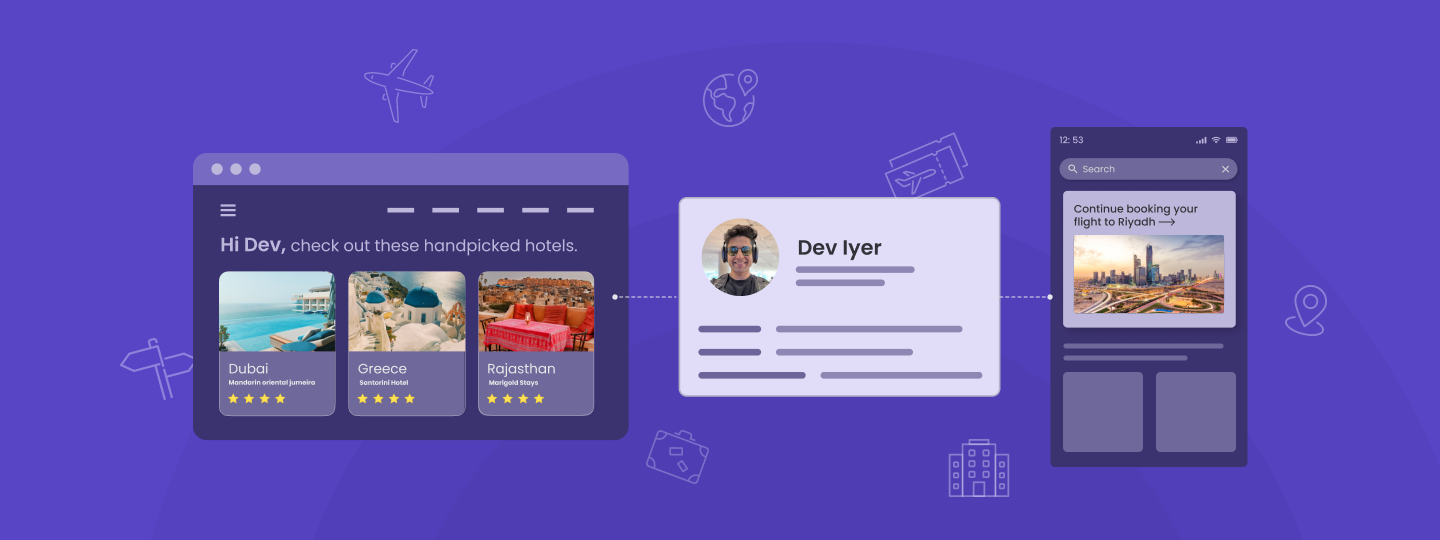

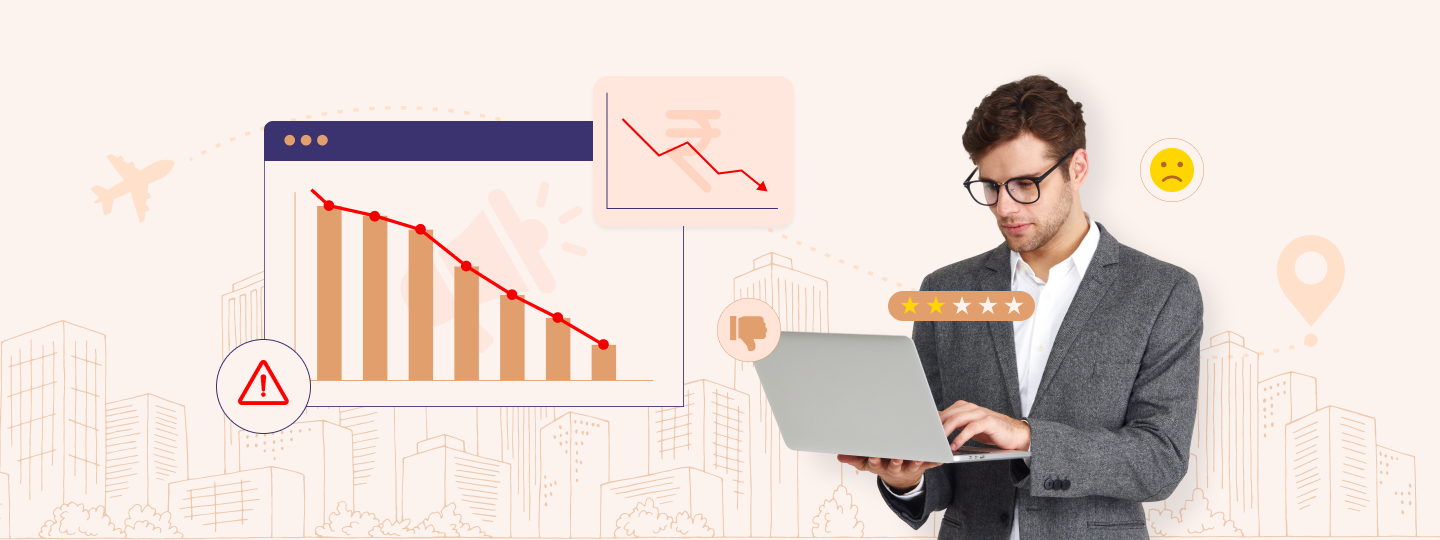
 Vanhishikha Bhargava
Vanhishikha Bhargava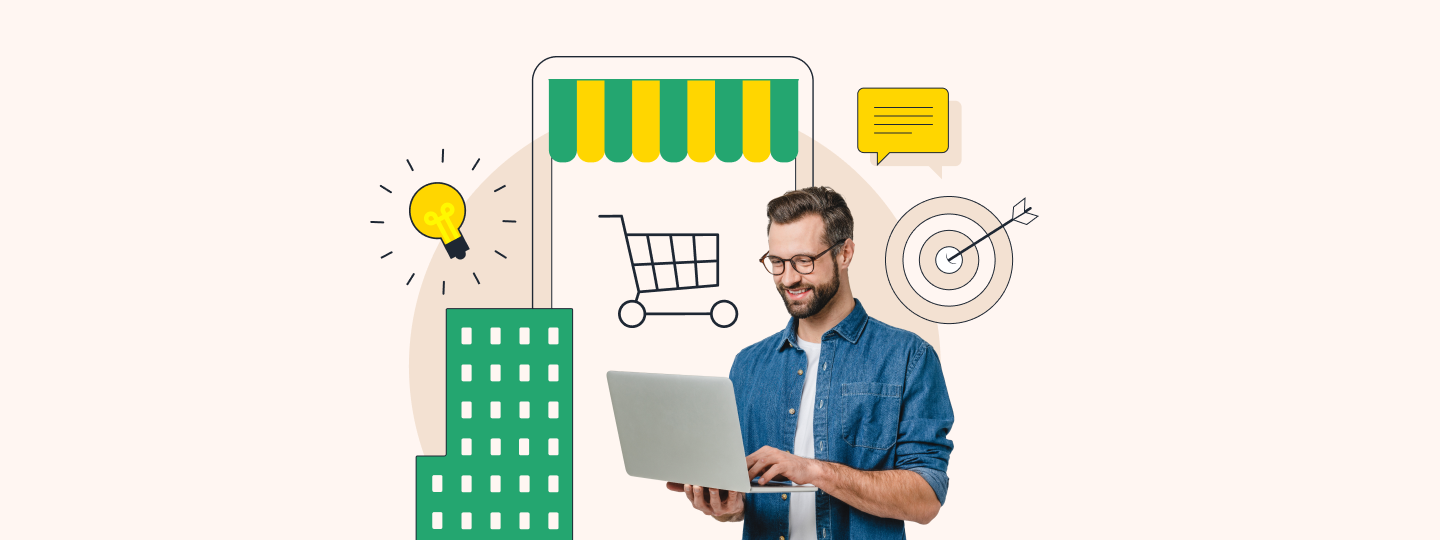
 Diksha Dwivedi
Diksha Dwivedi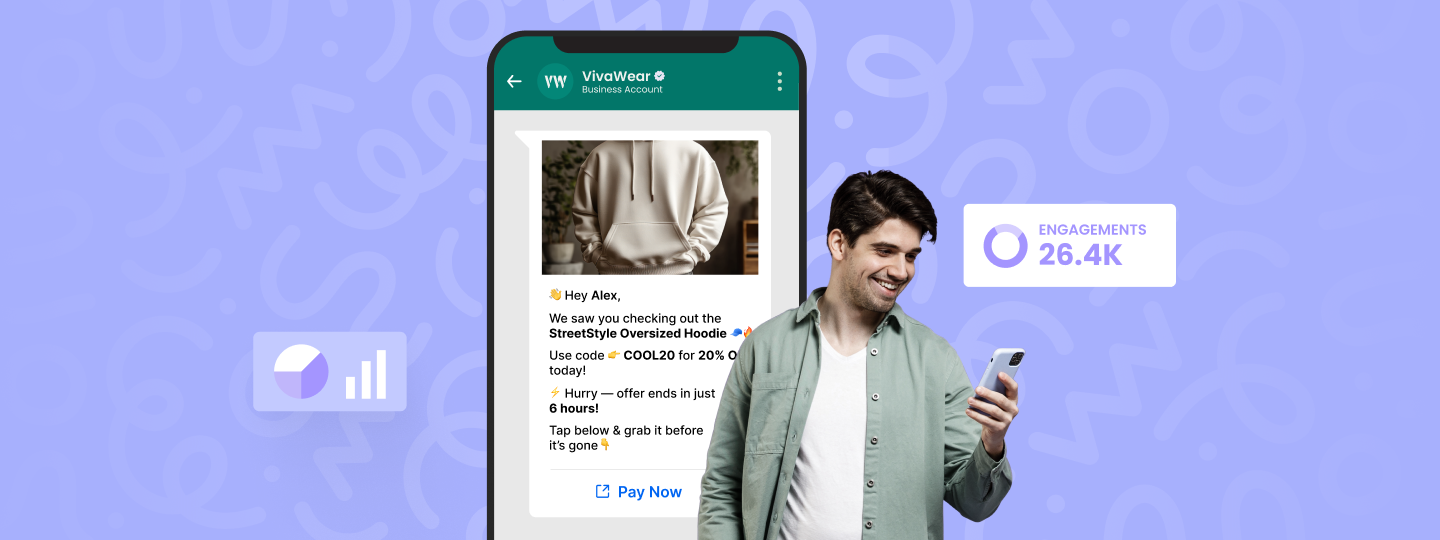
 Prakhya Nair
Prakhya Nair